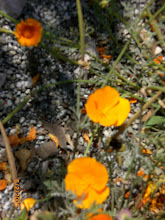
By textbook standards a community garden is “a single piece of land gardened collectively by a group of people”. However, since I’ve exposed myself to the many facets of community gardening, throughout the duration of this project, I learned that community gardening is so much more than that brief definition.

A community garden connects people. Whether they are total strangers, families, or friends. A community garden brings people together as they work for the same goal; to bring about natural and nurtured fruits, vegetables and flowers. Bringing about this sense of community makes all the hard work and effort that gardeners put in pay off. Their pay off is seeing fresh produce and buds grow from the soil up while taking themselves away from the hustle and bustle of life and reconnecting them to their roots, the earth.

Community gardens are not all alike. There are two main types of community gardens; ones that are grown for and by the community as a whole and ones that are an established plot of land with individual beds. However as these two types differ in fundamentals many community gardens find their stake in between, providing individual beds, communal beds, and educational teaching centers for seminars on gardening.

A key ingredient of a community garden is that the sole of the garden labor is done by volunteers and the gardeners themselves. Community gardens rarely called upon hired help for maintaining the grounds.

One can find community gardens all across the world. For the most part they are seen in the United States, Canada, Australia, and New Zealand. However it makes sense, as fads with cupcake shops and stores that sell solely soaps fade the phenomenon of fresh fruits and vegetables that you grow and nurture will always stay strong because of the fact that community gardening, and all gardening for that matter, reconnects you to your roots, the earth, where you came from, and makes you appreciate your food more; providing for a better quality diet and life, that is not just a trend of the month.



















